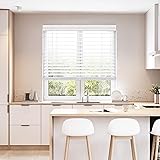Mastering Your Living Room: Avoiding Common Design Mistakes for a Beautiful & Functional Space
Do you ever wonder why your living room, despite your best efforts, doesn’t quite feel right? Does it seem cluttered, uninviting, or simply not as polished as the spaces you admire online? As explored in the insightful video above, many homeowners and renters inadvertently fall into common living room design mistakes that prevent their spaces from reaching their full potential. This blog post delves deeper into these critical errors, offering practical strategies and professional insights to transform your living area into a sanctuary of style and comfort.
A living room is arguably the hardest-working space in any home. It’s where you relax, entertain, read, watch movies, and sometimes even work. Therefore, it deserves thoughtful design that prioritizes both aesthetics and functionality. Drawing from the expertise of a licensed architect, we’ll unpack the top ten pitfalls and provide actionable advice to ensure your living room truly shines, making these common living room design mistakes a thing of the past.
Mistake 1: Letting It All Hang Out – The Open Storage Overload
While open shelving can look stunning in curated magazine spreads, the reality of everyday life tells a different story. The first major pitfall in living room design is the excessive use of open storage. It quickly transforms into visual clutter, creating stress and accumulating dust. Think about it: our daily essentials—remotes, chargers, paperwork—rarely look picture-perfect on display.
Instead, prioritize closed storage for the majority of your items. Professionals suggest reserving only about 20 to 40% of your storage as open space, dedicated solely to displaying genuinely aesthetic pieces that bring joy, not visual noise. If you already have abundant open shelving, consider incorporating stylish storage boxes or custom cupboard inserts to discreetly hide necessities. Books, with their uniform shape and appealing texture, remain one of the few items that consistently elevate an open shelf, lending an air of sophistication and intellectual curiosity to your home.
Mistake 2: The Messy Minimalist Paradox – Lack of Surfaces
The minimalist aesthetic champions clean lines and uncluttered spaces. However, a common living room design mistake within this approach is having too few flat surfaces. While the desire to keep things sparse is understandable, we inevitably accumulate items throughout the day: a coffee cup, a book, a phone, mail. Without dedicated spots, these items quickly spill over, creating unsightly piles on your beautiful, albeit limited, surfaces.
The solution is simple yet crucial: incorporate strategically placed side tables, coffee tables, or console tables. These provide essential landing zones, preventing everyday “clutter” from accumulating in unwanted areas. A well-placed side table next to your sofa or armchair isn’t just a convenience; it’s a fundamental component of a truly functional and tidy minimalist living room.
Mistake 3: The Ill-Sized Coffee Table – Proportions Matter
The coffee table is often the anchor of your seating area, yet its size is frequently misjudged. A coffee table that’s too small can make the room appear under-furnished and awkward, while one that’s too large can overwhelm the space, making it feel cramped. Achieving the right proportions is key to harmonious living room design.
General guidelines suggest that your coffee table’s height should be approximately the same as your sofa’s seat, typically ranging from 40 to 46 centimeters (16-18 inches). For length, aim for two-thirds to three-quarters the length of your sofa. In terms of width, it should generally be within the same range as your sofa’s seat depth or even narrower, ensuring ample clearance for comfortable movement. Always aim for at least 45 cm (18 inches) of clear space around the coffee table to facilitate easy traffic flow. If you adore a smaller table, consider pairing it with another to create a more substantial, proportionate centerpiece.
Mistake 4: The Floating Rug Faux Pas – Undersized Rugs
Nothing says “design mistake” quite like a rug that’s too small, creating what’s often referred to as a “floater” in the middle of the room. This common error can visually shrink your space, cheapen its appearance, and break the cohesive flow of your seating area. A rug, correctly sized and placed, defines a zone and grounds your furniture, making the room feel larger and more intentional.
The golden rule for rug placement is straightforward: the front legs of all your main seating pieces (sofas, armchairs) must rest on the rug. This simple principle visually connects the furniture, creating a unified and inviting seating zone. Neglecting this fundamental aspect is one of the quickest ways to undermine an otherwise well-planned living room layout.
Mistake 5: The Matchy-Matchy Menace – Avoiding Furniture Sets
Walking into a room where every piece of furniture—sofa, armchairs, coffee table, end tables—comes from the same “set” can feel incredibly dated, boring, and even lazy. While convenient, this approach strips a room of personality and depth. A truly beautiful space tells a story through carefully curated pieces, not a one-stop-shop purchase.
Instead of matching, aim for harmonious contrast. Seek out pieces that complement each other through varying textures, colors, wood grains, and styles. Think of it like cooking: a farmer’s market approach, where diverse, fresh ingredients come together to create a rich, flavorful dish, is always more exciting than a bland, pre-made canned soup. If you already own a matching set, don’t despair; integrate contrasting decorative items, throw blankets, pillows, or even swap pieces with another room to introduce visual interest and break up the monotony. For example, a dark wood table can be instantly transformed with a lighter tablecloth, adding a fresh layer without costly replacements.
Mistade 6: Creating a Dance Floor – Pushing Furniture to the Walls
The default instinct for many is to push all furniture against the walls, believing it will make the room appear larger. This is a common living room design mistake that often backfires, creating vast, unusable “dance floor” space in the center and making the room feel less intimate and disconnected. Furniture placement should be about fostering connection, not creating perimeter outlines.
Focus on creating conversational groupings. Pull sofas and chairs slightly away from the walls and arrange them to encourage interaction. Even a few inches can make a significant difference. In larger rooms, this strategy can help define smaller, more intimate zones within the greater space, making the area feel cozy and inviting rather than cavernous.
Mistake 7: Hating Your Neck – Incorrect TV Height
Design extends beyond aesthetics; it must embrace ergonomics. A prevalent living room design mistake is hanging the TV at an uncomfortably high position, often above a fireplace mantle. While trendy, this practice forces viewers to crane their necks, leading to discomfort and diminishing the practicality of the screen. Your TV should be positioned at eye level when you are seated, ensuring a comfortable viewing experience.
If you dislike the visual impact of a large black screen, explore alternatives to hanging it too high. Consider built-in cabinets with doors that can conceal the TV when not in use. Painting the wall behind the TV a darker color can help it blend into the background, or integrating it into a custom niche can make it less prominent from the side. Prioritize your comfort and long-term health over fleeting design trends.
Mistake 8: Not Understanding Scale – Oversized or Undersized Furniture
Scale refers to the size of an object in relation to other objects in the room and the room itself. Buying furniture that is either too small or too large for your living room is a crucial living room design mistake. Undersized pieces can make a room look sparse and uninviting, while oversized items can make the space feel cramped, claustrophobic, and overwhelming, creating the illusion that you need a bigger home when you simply need appropriately scaled furniture.
When selecting furniture, always consider the available clearance space. For larger living rooms, aim for at least 75 cm (30 inches) of clear space between furniture pieces and walls. In smaller apartments or rooms, a minimum of 45 cm (18 inches) of clearance between pieces is essential for comfortable movement and visual balance. Accurate measurement and careful planning are your best allies in achieving optimal scale.
Mistake 9: Living in the Dark Ages – Single Light Source Syndrome
Relying on a single overhead light source in your living room is a common living room design mistake that severely limits both ambiance and functionality. While a bright overhead light is useful for cleaning or finding lost items, it creates harsh shadows and lacks the warmth needed for a cozy, inviting atmosphere. Effective lighting is layered and serves multiple purposes.
Aim for five to seven different light sources at varying heights and in different zones within the room. This includes ambient lighting (overhead fixtures), task lighting (reading lamps beside sofas or armchairs), and accent lighting (wall sconces, picture lights, or floor lamps that highlight architectural features or artwork). This layering allows you to adjust the mood, illuminate specific activities, and create a sophisticated, well-lit environment that adapts to any occasion.
Mistake 10: Lifeless Walls – Bare and Boring
While minimalism has its place, leaving your living room walls stark white and bare is often a missed opportunity to inject personality and charm. This living room design mistake can make a space feel cold, unfinished, and uninviting, lacking the lived-in warmth that makes a house a home. Walls are a canvas waiting to express your unique style.
Transform your walls by moving beyond stark white. Consider softer hues like light creams, pastels, or even bolder accent colors to add warmth and character. Incorporate large pieces of artwork, create a dynamic gallery wall, experiment with wallpaper, or add architectural moldings for texture and sophistication. These elements add depth, visual interest, and reflect your personality, preventing your living room from feeling dull and sad. Your home should be a reflection of you, and your walls offer an expansive opportunity to let that expression shine.











